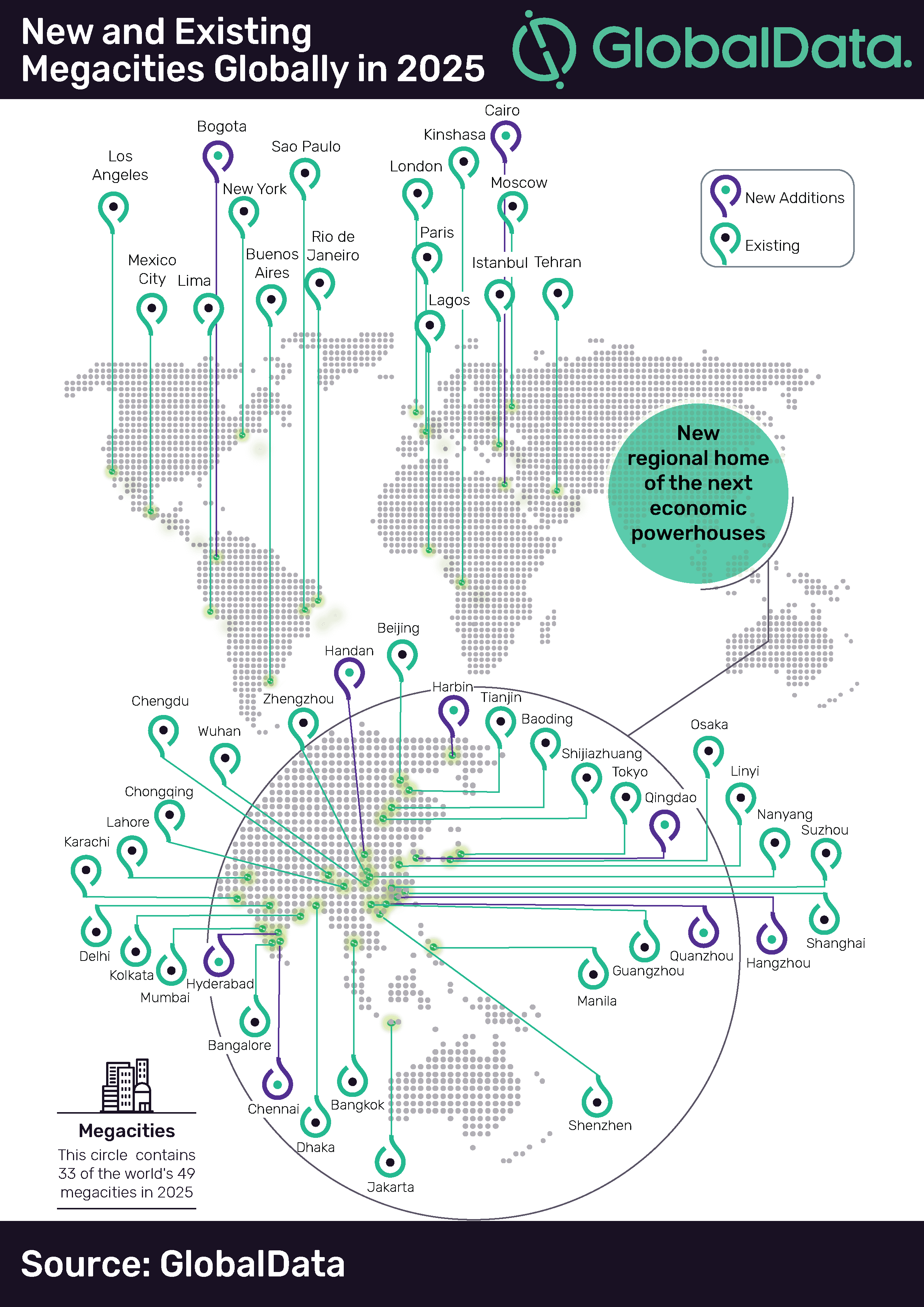Urban Expansion: China to Lead the World Ranking with 19 Megacities by 2025
8 Sept 2022, 2:56 am GMT+1
Robust economic growth and rapid urbanization over the last few decades has resulted in the creation of a number of megacities in Asia. Against this back drop, 33 out of the projected 49 megacities by 2025 will be located in the region. The City Economics Database reveals that megacities were home to nearly 8.35% of the world’s population and contributed 15.50% to total global GDP in 2018. Of the world’s 40 megacities in 2018, 26 were located in Asia. GlobalData, the analytic company behind the survey, forecasts that the number of megacities will increase to 49 and more than two-thirds of these megacities (including 19 in China and six in India) are expected to be located in Asia by 2025.
is defined by the United Nations as a city which has a population of 10 million or more people. Currently, there are 40 megacities in the world. These cities include Tokyo, New York, Paris, Berlin, and Bangkok among others. The 2017 UN statistics indicate that the cities with the largest populations worldwide were Tokyo and Shanghai with 38.8 million and 35.5 million people respectively. Of the nine cities that are projected to become megacities between 2018 and 2025, five will be from China (Handan, Hangzhou, Harbin, Qingdao and Quanzhou), two from India (Chennai and Hyderabad) and one each from Egypt (Cairo) and Colombia (Bogota).

Asian megacities overtaking countries in terms of economic size
Rapid expansion of cities has resulted in creating a number of megacities that are larger and bigger, both in terms of population and GDP, than many individual countries. For instance, Tokyo, which is a US$1.50trillion economy, had a greater GDP than that of Spain’s US$1.42trillion while GDP of Shanghai (US$495bn) and Beijing (US$459.6bn) were greater than that of Argentina (US$475.4bn) and Norway (US$439.5bn) in 2018. Furthermore, Asian megacities are expected to contribute 9.4% to the global GDP and 6.6% to the total world population in 2025. Tarun Bisht, Economic Research Analyst at GlobalData, says:
“Though Asian megacities dominate the list of megacities they are far behind their counterparts from the developed world in terms of per capita income, employment generation and living standards. Elevating productivity and creating job opportunities by harnessing favorable demographic characteristics should be the key focus areas to create sustainable megacities.”
Share this
previous
Property Investment Tips for Beginners
next
4 Common Challenges in Billing Business Clients and How to Overcome Them